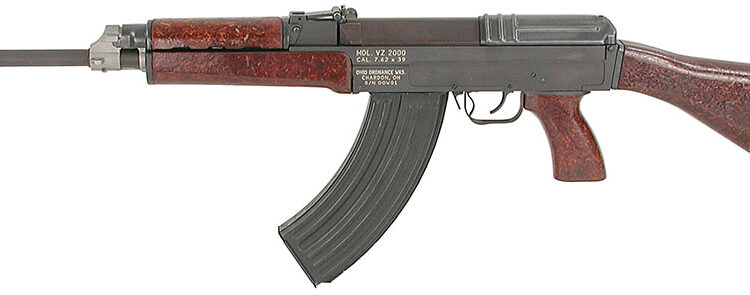By Dan Shea
One of the more interesting designs to come out of the post World War II era is the Czechoslovakian Vz58 Assault Rifle. While it is often confused with the Kalashnikov series weapons, it only shares outer profile and caliber with the AK system. That 7.62x39mm caliber choice was a second choice for the Czech designers, they started in 7.62x45mm. SAR has covered the Vz58 in previous issues, but it would seem appropriate for SAR to revisit a couple of pieces of information, that would be of special interest to the US collecting community.
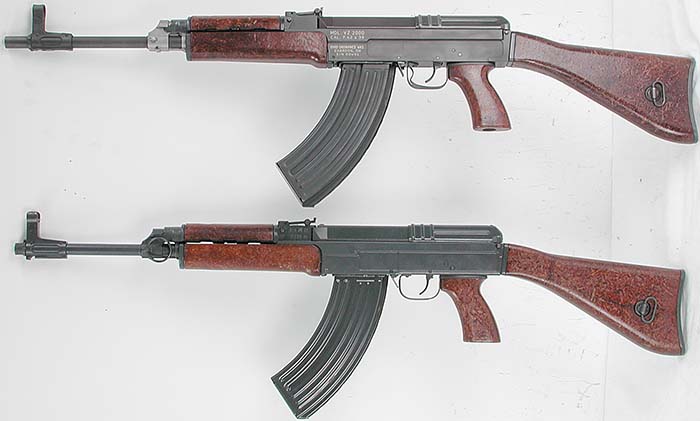
There were reports during the Vietnam War of some unusual weapons showing up in the hands of NVA officers. I have personally listened to interesting stories in the old “ComBloc” nations, of the support that these Soviet Satellite countries gave to the North Vietnamese back in the 1960s. One day in the mid 1990s I sat in Belgrade and listened to a Yugoslav Serb discuss the massive blood drives that Yugoslavia had to send their quota of blood and plasma to the North Vietnamese Army. It was a somewhat Kafkaesque moment, or perhaps more like seeing “The man behind the curtain”. My contact and I discussed a lot more, but I was still a bit off balance from that bit of news. In any event, the discussion turned to other items that were sent there, and I have also had discussions with Czechs and Russians regarding what was clandestinely sent to “The People” in their “Struggle against the Imperialists”. It is hard to sort the Baloney out sometimes, because if everything that I was told by the Czechs was true, every NVA soldier would have had a DSHK and a Skorpion. One undeniable truth is, that there were Vz58s that made it from communist Czechoslovakia to Vietnam, and they were generally used by higher ranking officers.
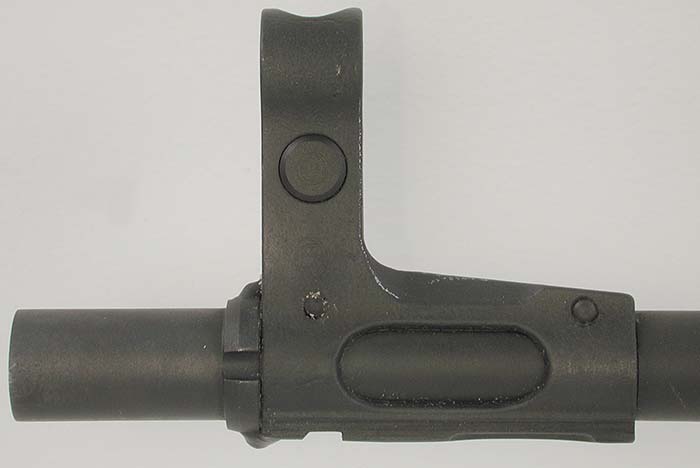
I have seen four known transferable examples in the United States, LMO had two fully transferable Vz58s go through the shop in the early 1990s, one full stock and one folding stock. All of the above were represented as Vietnam “Bringbacks”, registered by the United States Military Veterans who captured them. The full stock and the folder that went through LMO’s inventory in the early 1990s were my introduction to these rare and unusual weapons.
The Vz58 is a lightweight, reliable weapon. It is quick to the aim, easy to load, and it is what I call “Easy to the hand”. What I mean by that is something that might be better explained as a “Deer hunting” type of discussion, as opposed to military- to try and reach all of you reading this. Imagine yourself having to walk through brush, and over mountains, for a 12-hour day. In one hand, you have a classic Winchester 30-30 Model 1894. While it may be heavy at the end of the day, compare it to a day when you carry a Remington Model 760 pump. The small difference in weight and length can wear you down hard. The same is true of military weapons- a little bit of weight and length can induce a lot of wear. I am sure grunt math would be logarithmic on the difference.
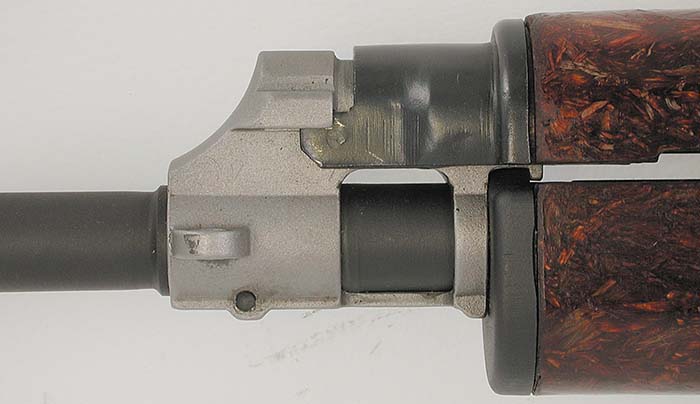
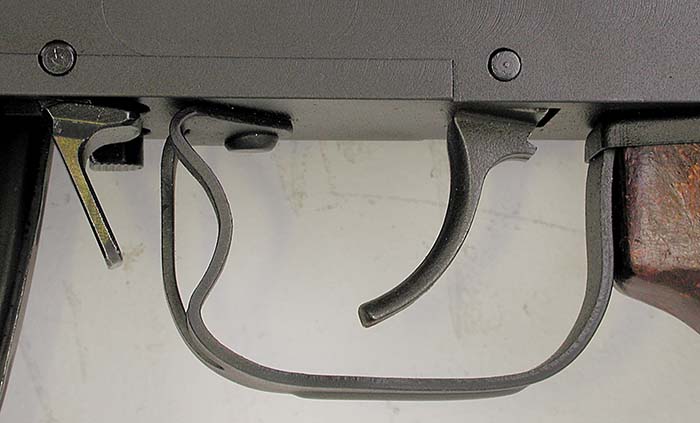
All you have to do is pick up the Vz58 to know what I mean- it is easily carried in one hand, and shoulders quickly. Battles aren’t generally fought on the march anymore, where 10lb rifles come from shoulder arms down to volley fire at a close enemy on a field. A 6lb rifle that you can run like hell with through the brush, and shoulder and fire, is worth its weight in hot “A rats” and dry socks, and it has been that way since the turn of the last century. That being said, the Vz58 had some reliability problems, and it was not as robust as it could have been. The unique hammerless firing mechanism is generally flawless in operation, but other parts of the gun were not so reliable. Dirt did negatively affect the original design.
This brings us to the Ohio Ordnance Works offering that is just hitting the market- the Vz2000 rifle. It is a semi-automatic rifle, which has had a small extension permanently added to the front to comply with barrel length regulations in the US. The original barrel is slightly under 16” and would keep the rifle as a “Short Barreled Rifle” under the NFA. The Ohio Ordnance Works Vz2000 has been kept in compliance with current US laws, in every way. In order to manufacture a semi-automatic rifle in the US today, that might otherwise be considered an assault rifle configuration, certain characteristics must be left off. These include threaded barrels, grenade launchers, bayonet lugs, flash hiders, etc. Also, if the manufacturer is going to use foreign made parts, he has to comply with a list of items that can, and can not be used in the US manufacture.
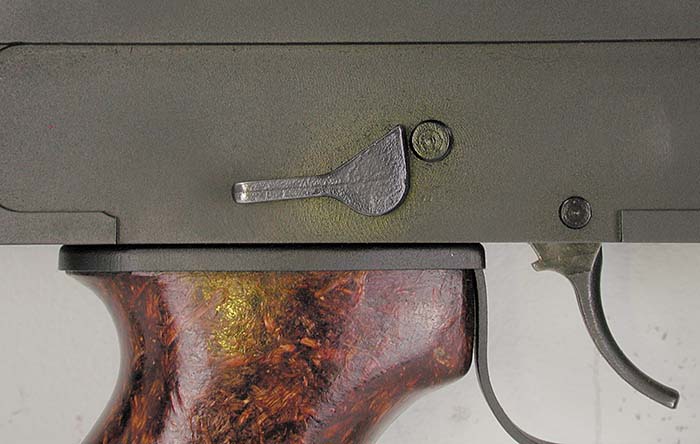
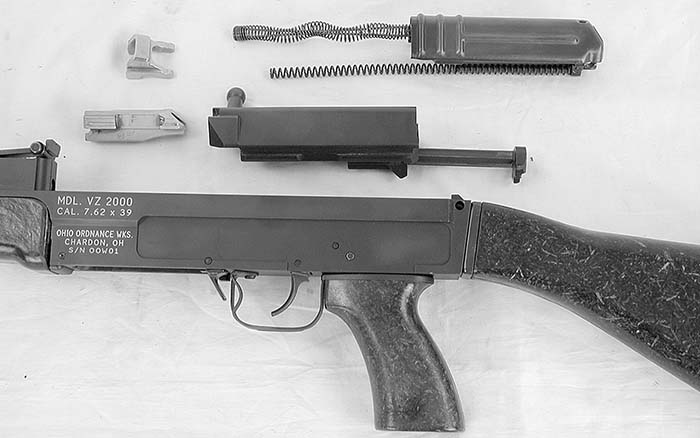
Bob Landies of Ohio Ordnance Works (OOW) spent a tremendous amount of time and money researching the system and getting approved for the US manufacture of the Vz2000 rifle. Being thorough has paid off for him. The rifle that he sent me for testing was outstanding. I have already placed an order for one for my personal collection.
The heart of the Vz2000 is a pivoted dropping “Lock Block” and a linear hammer. There is no rotating hammer in the lower. With a round chambered, safety off, the trigger is depressed and this allows the in line hammer spring to drive the linear hammer forward, striking the firing pin and igniting the primer. After firing a chambered round, the short stroke piston takes gas off of the front gas block as the projectile passes down the bore, and imparts rearward momentum to the bolt carrier assembly. Gas and byproducts of propellant deflagration are kept out of the receiver, always a good thing. The bolt carrier moves rearward, pivoting the locking block up and out of the locked position. The locked position is one of the more secure that I have seen- there are two robust locking lugs, one on each side of the locking block. These are cammed into corresponding slots in the receiver. The OOW Vz2000 receiver is milled from a solid steel forging, and this somewhat traditional relationship between locking lugs, receiver, and barrel, is a tried and true formula. Once the locking block has fully cammed up out of its locked position, the entire bolt carrier assembly continues unimpeded rearward motion in recoil. The expended cartridge which has been gripped under the extractor lip, hits the ejector and leaves the receiver. The recoil / return spring slows the motion and returns the bolt carrier forward, stripping another round from the magazine and chambering it as the locking lugs cam into place. The linear hammer has been retained back by the sear, ready for the next firing sequence. The Vz2000 is semi-automatic fire only.
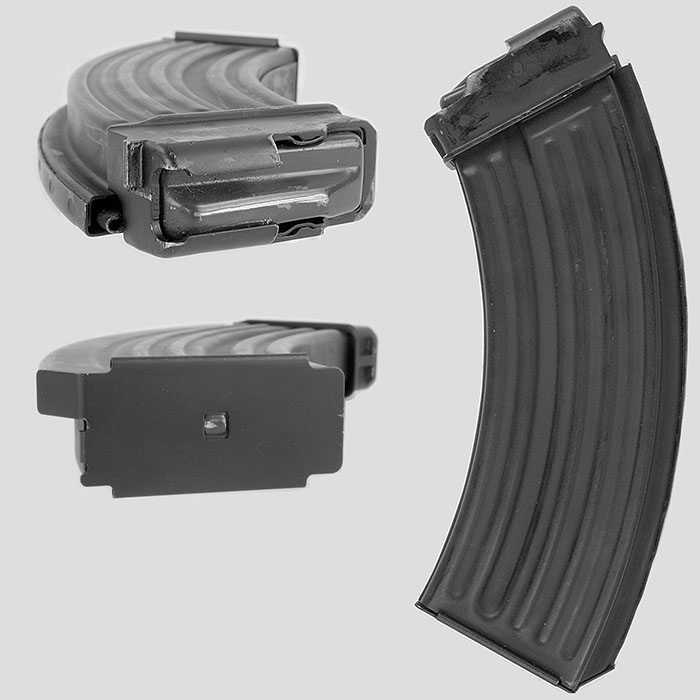
The OOW receiver and firing mechanism has been designed so it is not readily convertible to fully automatic fire- the machine gun components of a Vz58 rifle will not fit. I was supplied with a copy of the letter from ATF Technology Branch signed by Mr. Edward M. Owen Jr., former Chief of ATF Firearms Technology Branch, where the OOW design was approved as made.
Bob Landies kept the design outline of the original rifles in his Vz2000, and it makes for a pretty package. OOW production methods pay attention to detail. The receiver and all parts have a nice matte blued finish, low light reflecting but very attractive. The receiver is CNC machined from one solid piece of forged 4150 steel. One of the features that I like about OOW’s work is attention to details in heat treating. Many modern designs suffer from misunderstandings about wear, stress fracture, hardness and crystallization. (As an aside, if any budding inventors out there want, email me and I will hook you up with ASM and the Heat Treating Society and their classes and books). If you look elsewhere in this issue of SAR, you will see my article on ASD and their AK variants. If you look at the AK receiver supplied by Ohio Ordnance Works, you will see some odd lines around the trigger pin, and hammer pin holes- that is evidence of heat treating, which was done properly of course.

Ohio Ordnance works also donated one of their rifles to our new SAR Subscriber Drive Raffle- and I put it as first prize, above the transferable Powder Springs MAC-10- that is how impressed I was with this rifle. It looks good, feels good, and was very accurate and reliable.
Downside- while it is more accurate than most AK variants I have fired in the US, it did not match up with some of the finer AR15 variants in accuracy. That being said, the Vz2000 is a production line gun that was not “Tweaked”. It performed quite well. I had no malfunctions in firing at all. The trigger was crisp, ejection was positive. My take? If you like the lines, get one. At least get some hands on to see if it suits your shooting needs or fits your collection – Dan
Ohio Ordnance Works, Inc.
310 Park Drive
Chardon, OH 44024
Tel 440-285-3481
Fax 440-286-8571
| This article first appeared in Small Arms Review V6N2 (November 2002) |



